|

AWM 073669 | Berlin, Germany, February 1941: General Tomoyuki Yamashita, Japanese Army, left, translates the inscription on a samuri sword for German Field Marshal Walter Von Brauchitsch. Yamashita was part of a Japanese Army and Navy delegation studying war strategy in Germany. Eight months later on 8 December 1941 he led the Japanese armies in their invasion of Malaya which ended in the fall of Singapore on 15 February 1942. |
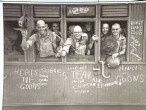
AWM 005456 | Sydney, New South Wales, February 1941: Australian soldiers, members of the 2/18th Battalion, 2nd AIF, on arrival at the ferry wharf in Sydney. The 2/18th Battalion was part of the 22nd Brigade, 8th Division, which had been ordered to Malaya to strengthen the defences of that British colony should it be attacked and the battalion left Sydney on the Queen Mary on 4 February bound for Singapore. The 2/18th Battalion was to see action against Japanese forces in southern Malaya in January 1942 and in the defence of Singapore in February. |

AWM 007748 | British Naval Base, Singapore Island, September 1941: A British warship being refitted in the naval base’s floating dock. The Singapore naval base was the symbol of British naval power in the Far East. To Australians in 1941 the Singapore Naval Base represented the shield with which the Royal Navy protected the northern approaches to Australia should it ever be threatened by the ships of an Asian navy. |
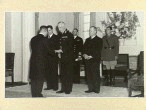
AWM 006091 | Government House, Canberra, 14 March 1941: The newly appointed Japanese Minister to Australia, Mr Kawai, presents his credentials to the Australian Governor-General, Lord Gowrie. Mr Kawai later attended the opening of the Australian War Memorial on 11 November 1941, less than four weeks before Japanese forces engaged Australian and other British Empire troops in Malaya on 8 December 1941. It is said that after the war Mr Kawai retained a great affection for Australia and often attended Anzac day ceremonies at the Yokohama war cemetery, Japan. |

AWM P00618.001 | Kota Bharu, Malaya, early 1942?: A camouflaged Japanese A6M Zero fighter of the Japanese 22nd Air Flotilla. Planes from this unit flew cover for the Japanese air attacks that sank the HMS Prince of Wales and HMS Repulse off the Malayan coast on 10 December 1941. |

AWM P02018.055 | At sea off the east coast of Malaya, 10 December 1941: Crew members escaping over the side of the doomed British battleship HMS Prince of Wales after the Japanese air attack. Z Force, consisting of HMS Prince of Wales, the battle-cruiser HMS Repulse, and four destroyers including the Australian HMAS Vampire, sailed from Singapore on the afternoon of 8 December 1941 to engage the Japanese invasion fleet off Kota Bahru. The force received no air cover and was attacked shortly after 11 am on 10 December by torpedo bombers of the Japanese 21st and 22nd Air Flotillas. Both the Prince of Wales and the Repulse were sunk with the loss of over 800 men. There were now no British capital ships in the region capable of engaging the Japanese. |
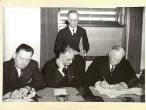
AWM 010690 | December 1941: The Australian War Cabinet watches while the Governor-General, Lord Gowrie, signs the proclamation which declared that a state of war existed between Australia and the Empire of Japan. From left to right are Frank Forde, Minister for the Army, the Prime Minister, John Curtin, the Secretary of the Prime Minister’s Department, Frank Strahan, and Lord Gowrie. |

AWM 012126 | Singapore, late 1941: One of the first Japanese wounded to arrive in Singapore from the northern Malaya battlefront. |
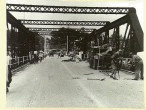
AWM 011486 | Malaya, January 1942: Engineers prepare to blow up a bridge during the rapid Japanese advance down the Malayan peninsula. |
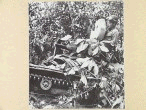
AWM 127895 | Malaya, 17 January 1942: A Japanese Type 97 Tankette camouflaged by leaves near Gemas, south-west Malaya. On 14 January 1942 there occurred in the Gemas area the first major encounter between Australian and Japanese army units of the Pacific war. As elements of the Australian 2/30th Battalion prepared for a surprise attack on advancing Japanese forces at the Gemencheh bridge Lieutenant Colonel Galleghan sent this message: The reputation not only of the AIF in Malaya, but of Australia, is in the hands of this unit. The Australian attack was a success and led to an excited overreaction on Singapore radio during which a reporter declared that the tide of battle in Malaya was on the turn with the AIF as our seawall against the vicious flood. The Japanese advance, however, rolled on. |
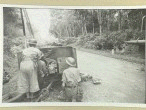
AWM 011302 | Bakri, Malaya, 18 January 1942: At 6.45 on the morning of 18 January 1942 five Japanese tanks advanced along the road towards Bakri, south west Malaya. Here they were fired on by two 2-pounder guns of the 2/4th Australian Anti-Tank Regiment. The Australians destroyed these five tanks, plus three more that arrived later, and their crews. Along with a recent Australian success at Gemas further north this seemed to suggest that the hitherto victorious Japanese advance down the Malayan Peninsula might be held. |

AWM 011303/33 | Malaya, January 1942: Australian Gunner A. D. Lang, Hurstville, New South Wales, laughs at a Japanese leaflet dropped over the British lines. Such leaflets, employed by both sides during the Pacific war, usually exhorted the opposition to surrender. |
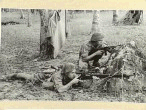
AWM 011304/18 | Malaya, January 1942: An Australian sniper and another Australian soldier armed with a Thompson sub-machine-gun on the lookout for advancing Japanese troops in a rubber plantation. |
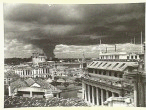
AWM 012468 | Singapore, Singapore Island, January 1942: From a building in the centre of the city smoke can seen from fires burning at the British Naval Base approximately nine kilometres away on the northern shore of the island. It was abandoned by the British on 11 February Japanese Naval units entered the base three days later and were surprised to find it deserted and undefended. |
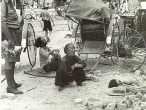
AWM 011529/22 | Singapore, Singapore Island, 3 February 1942: Japanese air raids on Singapore began just after 4 a.m. on 8 December 1941 after the Japanese landings at Kota Bharu. Over the next two and a half months the city was regularly bombed and these raids increased to two to three daily by the end of January 1942. Civilian casualties among the Chinese and Indian population were high. |
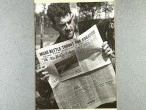
AWM 012457 | Malaya, January 1942: An Australian soldier, who had made his way back to British lines after being cut off, reads about the battle of Muar. Between 18 and 22 January 1942 Australian and other British Empire units fought a series of fierce engagements against Japanese forces advancing from Muar, south west Malaya. On one occasion during this period soldiers of the 2/19th Battalion advanced singing Waltzing Matilda. |
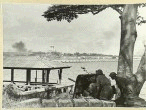
AWM 012449 | Kranji area, Singapore Island, early February 1942. Australian anti-tank gunners in a position overlooking the Straits of Johore and the Causeway which connects Singapore Island with the city of Johore Bahru on the Malayan mainland. The last remaining British Empire forces in Malaya withdrew to Singapore Island on 31 January 1942 and a hole was blown in the Causeway. The front-line defence of the island at Kranji in the north and along the north-west coast was given to the Australian 27th and 22nd Brigade respectively. |

AWM 129751 | Straits of Johore, Singapore Island, 8 or 9 February 1942: The original caption for this photograph states it to be of Japanese forces landing on Singapore Island in February 1942. If it was taken during the Japanese invasion then it must be either of the landing on the north-west coast on 8 February, or at Kranji on 9 February. Both these landings were opposed by Australian troops. |

AWM 127903 | Ford Factory, Bukit Timah, Singapore Island, 15 February 1942: The unconditional surrender of Singapore by Lieutenant General Arthur Percival, General Officer Commanding, British Empire Forces, Singapore, to Lieutenant General Tomoyuki Yamashita, Japanese Imperial Army. Yamashita is seated at the extreme left and Percival is at the bottom right. The defence of Singapore Island lasted just seven days. The table on which the surrender document was signed is in the Australian War Memorial, Canberra. |

AWM 127902 | Singapore, 15 February 1942: British troops surrender to the Japanese in Singapore. Between 8 December 1941 and 15 February 1942, during the campaign in Malaya and on Singapore Island, British Empire casualties amounted to 138,708 of whom approximately 130,000 became prisoners of war. Australian casualties amounted to 1,789 killed, 1,306 wounded and approximately 15,000 POWs. Japanese casualties during the same period were approximately 9,800, of whom 1,714 were killed on Singapore Island. The Australian official history states: …the fall of Singapore reverberated throughout the world as one of the greatest disasters in British [and Australian] history. |
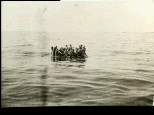
AWM P02100.001 | South China Sea, 14 February 1942: Survivors from the Chinese gun-boat Shu Kwong, sunk by the Japanese off the coast of Sumatra. On board were thirty-two Australian technicians ordered to leave Singapore before its fall as it was felt their services would be valuable elsewhere. Twelve of the technicians survived the sinking of the gunboat one of whom was Alfred Holloway who donated this photograph to the Australian War Memorial. After the British surrender on 15 February 1942 the sea to the south of Singapore was dotted with craft of various sizes fleeing from the island. Among those who escaped from Singapore was the Australian commander of the 8th Division, Lieutenant General Gordon Bennett. |
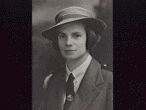
AWM P01021.001 | Portrait of Sister Elaine Balfour-Ogilvy, Australian Army Nursing Service, 2/4th Casualty Clearing Station, 8th Division, 2nd AIF: Sister Balfour-Ogilvy, along with sixty-three other Australian Army nurses, escaped from Singapore aboard the SS Vyner Brooke on 12 February 1942. The Vyner Brooke was sunk by Japanese air attack off Banka Island, Sumatra, on 14 February. Two of the nurses were killed and nine others, who escaped on a raft, were never seen again. A party of twenty-two Australian nurses landed from a lifeboat on the north coast of Banka Island where they were captured, along with other survivors, by Japanese soldiers. They were forced to wade out into the water and then machine gunned. Sister Balfour-Ogilvy died in this massacre from which there was only one survivor – Sister Vivian Bullwinkel, 2/13th Australian General Hospital. |
|